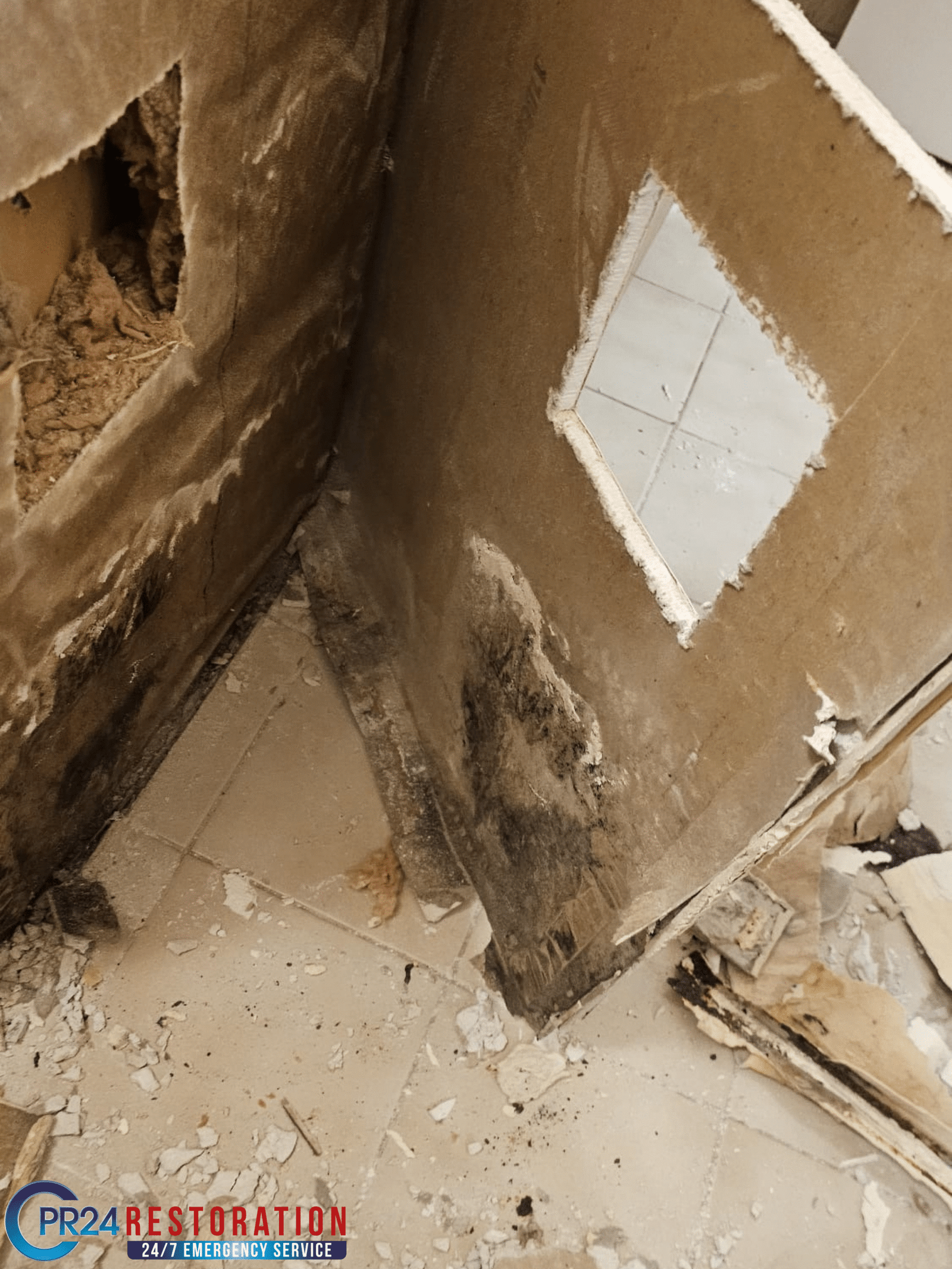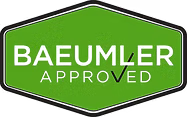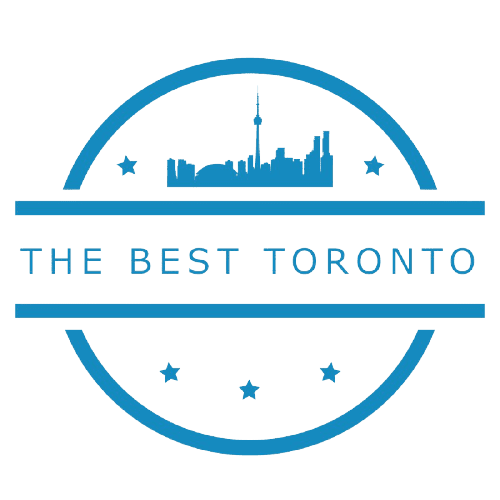Our IICRC-Certified mold removal services in Vaughan and Thornhill are very important. Mold exists everywhere, even if you don’t see it. Mold spores multiply into millions and become airborne during incorrect removal attempts, while undisturbed mold releases minimal airborne spores.
Mold exposure can be extremely harmful. It poses serious health risks to young children, older adults, and people with weak immune systems or breathing problems.
Residents of mold-affected homes often suffer from multiple health issues. These include rashes, sickness, allergies, asthma, headaches, and general weakness.
Mold exposure over time can cause lung infections. It can also lead to severe coughing or wheezing.
People may experience irritation in their eyes, nose, and throat. Nausea is another possible effect. Your health faces greater risks the longer mold continues to grow indoors.
This piece will walk you through the essentials of professional mold removal in Thornhill.
Signs You Might Need Mold Removal in Thornhill
You can save yourself from major damage and health risks by spotting mold problems early in your Thornhill home. Mold spores are natural. They spread in certain conditions. We see this mostly in hot, humid, dark places with little airflow.
Visible mold on walls, ceilings, or floors
You’ll know you have a mold problem when you see it growing on surfaces. Watch out for dark spots, odd colours, or fuzzy patches that appear on your walls, ceilings, floors, or near windows. Black mold usually appears as large black stains and feels either slimy or fuzzy when you touch it.
Your bathrooms, kitchens, and basement need extra attention since mold loves these spots. Look for peeling paint, wrinkled wallpaper, plaster cracks, or white crystal-like spots on walls. These signs show there may be moisture problems underneath.
Musty or earthy odours in certain rooms
That musty smell you can’t get rid of might be your first clue that mold is growing somewhere hidden. The numbers tell us that 60% of mold problems start with these musty odors.
Many people say it smells like a damp forest floor and it often makes them sneeze. Research shows that following your nose is actually more reliable than looking for visible mold. You should ask more questions if this smell hits you, especially when you have enclosed spaces like basements or attics.
Unexplained health symptoms like coughing or rashes
Mold can make you sick in many ways, and some people are more at risk than others. Watch for coughing, wheezing, stuffy nose, irritated eyes, skin rashes, and headaches.
The risk is higher for people with allergies, breathing issues, and chemical sensitivities. It also affects seniors, pregnant women, babies, and anyone with a weak immune system. Living with indoor moisture and mold for a long time can lead to asthma, bronchitis, and other breathing problems.
Recent water damage or flooding in the home
Mold starts growing just 24-48 hours after water damage, so you need to act fast. Leaks, floods, or high humidity create perfect conditions for mold to grow. Damp spots in your home from leaks or poor airflow become mold’s favorite places.
After water damage, check your property for moisture problems. Look for stains and discolouration. Also, sniff for musty smells.
What to Expect During a Mold Inspection in Thornhill
Professional mold inspections help identify harmful growth in your Thornhill home. You should know what happens during this process to prepare for this vital step toward a healthier living environment.
Original visual and thermal assessment
Certified mold inspectors start with a complete visual evaluation when they arrive at your property. Most professionals come in unmarked vehicles to protect your privacy.
They check high-risk areas like basements, bathrooms, and attics for visible signs of mold growth.
The inspection looks for water stains and discolouration on floors, walls, ceilings, and carpets. These experts use new technology like thermal imaging cameras. These cameras help find temperature changes that may indicate moisture issues behind walls or above ceilings.
Identifying moisture sources and hidden mold
Finding the root cause of mold growth is essential for a lasting solution. The inspectors use special tools like radio frequency gauges, fibre optics, and moisture meters to find hidden dampness. They get into walls, ceilings, floors, crawlspaces, and ventilation systems carefully. This detailed work helps pinpoint what’s feeding the mold growth – whether it’s leaks, condensation, or poor ventilation.
Creating a scope of work and quote
The professionals develop a detailed action plan after the assessment. Their report shows specific findings, recommendations, and a step-by-step remediation strategy. This document has the containment requirements, needed equipment like HEPA air scrubbers, and an estimated timeline. The scope lets you understand exactly what will happen during remediation so you can plan.
Third-party air quality testing Thornhill
Air quality testing proves mold presence best, especially when you can’t see the growth. Professional inspectors take air samples that accredited laboratories analyze.
These tests show the types and amounts of mold spores in your home. The lab results provide legal documentation with individual identification numbers that ensure reliability. Some companies also test surfaces to identify specific mold species for proper remediation.
Understanding the Thornhill Mold Removal Process
Our certified mold removal follows several key steps that eliminate contamination and prevent it from spreading. Remediation crews stick to strict industry protocols to keep everyone safe during this sensitive process.
Setting up containment zones
The first step creates proper containment barriers. These sealed zones stop mold spores from reaching clean areas of your home.
A single layer of 6-mil fire-retardant polyethylene sheeting works well for areas between 10-100 square feet. Larger spaces need full containment with double polyethylene layers and special chambers to enter and exit. You retain control through negative pressure in these zones. The polyethylene sheeting should billow inward on all surfaces, suggesting proper containment.
Using HEPA filters and air scrubbers
Specialized equipment cleans the air next. HEPA (High-Efficiency Particulate Air) filters catch 99.97% of particles as small as 0.3 microns, including most mold spores. Air scrubbers release purifying agents into the space and neutralize pollutants right at their source.
These machines filter air while creating negative pressure. They pull contaminated air through filters before releasing clean air. The devices must run non-stop during remediation because even quick exposure to mold can affect your health.
Safe removal and disposal of mold-affected materials
Technicians wear proper safety gear, including fitted respirators, goggles, and disposable clothing, before starting work. They can often disinfect and save non-porous materials like glass.
Contractors often need to completely remove porous materials like drywall, carpeting, and ceiling tiles. This is because mold can grow deep inside them. Heavy-duty bags seal all contaminated materials before leaving the containment area to stop cross-contamination.
Post-removal clearance testing Thornhill
Containment barriers and air filtration systems stay active for an extra 24-48 hours after cleanup. This ensures complete air exchange.
A third-party lab runs final clearance tests to verify successful remediation. Air sampling confirms normal spore levels. This independent certification shows that your Thornhill home is now free from harmful mold.
Attic Mold Thornhill & Basement Mold Thornhill
Thornhill homes face unique mold challenges in attics and basements that need specialized attention. Most homeowners discover these problems after serious damage has already occurred.
Why attics are prone to mold growth
Poor ventilation and humidity control make attics a perfect breeding ground for mold. Without proper airflow, moisture traps itself and creates ideal conditions for mold to grow.
The temperature difference between your home’s interior and the attic causes condensation on surfaces. Improperly installed insulation blocks vents and traps moisture against wooden surfaces. Water seepage and mold can form from ice damming during winter months.
Common causes for basement mold removal Thornhill
High humidity levels in Thornhill homes often lead to basement mold. Your health can suffer from respiratory issues, worse allergies, and other problems. Moisture problems usually stem from plumbing leaks, foundation cracks, and insufficient waterproofing. Heavy rainfall causes flooding, and poor ventilation keeps moisture from evapourating properly.
The right time to call for attic mold removal Thornhill
Musty odors or visible discolouration in your attic need immediate professional attention. Hidden mold growth might appear as unexplained coughing or rashes. Annual inspections help catch problems early since homeowners rarely check their attics.
Preventing mold in hard-to-reach areas
Your attic needs proper insulation that doesn’t block ventilation points. Adding dehumidifiers in basements along with good waterproofing helps prevent mold. Regular attic inspections might seem tedious but they help avoid getting pricey repairs later.
Contact CPR24 Restoration: Certified Mold Removal Services in Thornhill!
Mold removal is a serious health and safety issue for Thornhill residents. This piece explains how mold grows and disrupts your well-being. You need to act fast since mold starts growing just 48 hours after water exposure.
You can’t ignore the health risks that come with mold exposure. The dangers are especially serious when you have children, elderly people, or family members with weak immune systems. Watch out for early warning signs like musty odors, visible growth, or unexplained health issues before they get worse.
DIY approaches often fall short, and professional mold remediation is your best bet. Certified technicians stick to strict protocols that include proper containment, specialized filtration, and complete removal of affected materials. On top of that, third-party testing will confirm your home is truly mold-free after the cleanup.
Your attics and basements need extra care because they’re prone to moisture problems. Regular checks of these areas and proper ventilation with humidity control will create a healthier living space.
Untreated mold leads to bigger health problems and damages your property’s structure. So, getting professional mold removal services protects your family’s health and your home’s value. The right preventive steps after cleanup will keep your Thornhill home safe and healthy for years.
FAQs – Mold Remediation Thornhill
Q1. How much does mold removal typically cost in Thornhill?
Mold removal costs can vary widely, ranging from CAD 700 to CAD 42,000, depending on the extent of the problem. Small areas may cost around CAD 700-2,100, while extensive whole-house remediation can reach up to CAD 42,000. The final price depends on factors such as the mold’s location, spread, and any necessary repairs after cleanup.
Q2. Is it worth hiring professional mold removal services?
Yes, professional mold removal is often worth the investment. Experts have specialized knowledge and equipment to effectively identify and remove mold, including hidden growth. They also address the underlying conditions causing mold, ensuring a more thorough and long-lasting solution than DIY methods.
Q3. What are the signs that I might need mold removal in my Thornhill home?
Key signs of mold issues include:
– Mold growing on surfaces.
– Musty smells that don’t go away.
– Unexplained health problems, such as coughing or rashes.
– Recent water damage or flooding. If you notice any of these signs, it’s advisable to have your home inspected for mold.
Q4. How long does the mold removal process typically take?
The duration of mold removal varies depending on the extent of the problem. The process usually includes setting up containment zones. It also involves using HEPA filters and air scrubbers.
Next, we remove the affected materials. Finally, we complete post-removal testing. This can take anywhere from a few days to several weeks for extensive infestations.
Q5. Can bleach effectively kill all types of mold?
While bleach can kill surface mold on non-porous materials, it’s not always the best solution for all mold problems. Certified mold removal usually includes special treatments. It also focuses on the main cause of mold growth. This is important to stop future infestations.








